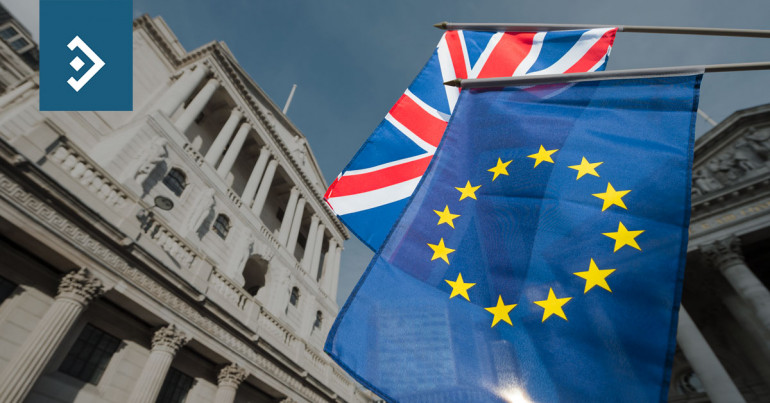
Sterling facing a reality check
Morning mid-market rates – The majors
January 29th: Highlights
- Pound corrects as Parliamentary vote looms
- Eurozone Q4 GDP to show minimal growth
- Dollar awaits Fed outcome
Today, it all ends!
Having wrenched the final say on the deal from Mrs. May, it seems that MPs didn’t really consider that what would happen if they threw the deal out. Having voted down the draft agreement by a considerable margin a couple of weeks ago, MPs will vote again today on “Plan B”. It looks curiously like Plan A, just with a series of amendments made to avoid a no deal outcome.
Again, there have been no practical or imaginative solutions suggested, merely procedural amendments that ensure the process actually achieves what no one seems to want; no deal.
After today, there are no plans in place for what the next move is to be and with only 61 days to go before the UK leaves the EU, there will be no time for anything other than yet another piece of brinkmanship where the decision will rest between no deal and an extension to Article 50.
The third solution: a second or “people’s” referendum has been ruled out by the Government so after today’s vote, despite warnings that seem to have been being issued for a year or more, the “doomsday clock really will show five minutes to midnight”.
The threats continued yesterday, with supermarkets and food outlets warning of food shortages.
For example, the UK gets 80% of its lettuces and 70% of its tomatoes from growers in Holland and Spain. The implication is clearly that after a no deal that produce will not be sold to the UK. That begs the question: where will it be sold? While that is a seemingly trivial example, it illustrates the need for a practical approach, rather than scaremongering.
The pound, having rallied as no deal was seemingly not going to be allowed to happen, lost some of its recent gloss yesterday as the market stared at the coming reality. It fell to a low of 1.3137, closing at 1.3163 and has continued to be pressured overnight.
Considering your next transfer? Log in to compare live quotes today.
Eurozone growth data to show minimal growth
The consolidated GDP data for Q4 will be released. Having grown by just 0.3% in Q3, the continued slowdown will be verified with an overall figure of just 0.2%.
There is a considerable amount of “wringing of hands” being done at present in several EU capitals as the blame for the inability of the economy to grow despite stimulus and artificially low interest rates that have both been in place since the end of the global financial crisis.
Using the principle of the lowest common denominator, it is the single currency itself that is getting most of the blame. Too strong for some, and too weak for others, it is facing a “Goldilocks” scenario, where “one size clearly does not fit all”.
This has been a common complaint that has been leveled at the single currency ever since its creation twenty years ago and prior to that, the same question was being asked theoretically.
Now, it appears that the euro is venerated sufficiently to be considered untouchable and the symbol of the cooperation of nations. It might be better described as “can’t live with it but cannot consider life without it”.
In truth, the euro has staggered from one crisis to the next with the unspoken truth growing that no one, weak or strong, really wants it. Rather than a symbol of unity, it is in danger of tearing the Union apart.
It will be interesting to observe how the new ECB President, who will be taking his place in November, views the single currency. He is unlikely to “vote himself out of a job” and it may be that greater integration is his or her answer. Whatever happens, the euro cannot survive in its present form so it is in for a bumpy ride until a solution is even discussed let alone set in place.
Yesterday the euro drifted in a narrow range reacting to the movements of the dollar. It reached a high of 1.1445 and closed at 1.1428.
Dollar awaits FOMC statement
The first, and possibly the most important FOMC meeting of the year begins today in New York and it will set the tone for the foreseeable future.
Growth in the U.S. is sustainable, inflation is under control, employment data is solid, and forward-looking activity and price indicators are strong, so why would the Fed do anything other than “sit on its hands”? That is precisely what traders expect Jerome Powell and his colleagues to do and the Chairman’s comments at the end of proceedings tomorrow should reflect that, a steady hand on the tiller.
There has been a propensity among G7 Central Banks (the ECB excepted) to want to “get involved”. As the markets recovered from the financial crisis Central Banks, having cut rates to zero and pumped liquidity, were left with little option than to sit back and watch the outcome.
Now as growth becomes erratic yet global inflation rates are low, they feel the need to do something, but the question is what? The ECB had been praised for its benign neglect but now that has blown up in their faces. The Fed. was criticized last year for moving too quickly and the U.S. economy is now performing reasonably.
The one takeaway from this is that there is not a global template for Central Bank actions and it has to be each to their own despite the cooperation that G7 brings.
The dollar is caught between so many drivers both domestic and global that the Fed. faces an almost impossible task to be able to predict with any certainty what the year may bring. It can only take a front row seat, show its preparedness and watch as the year unfolds.
The dollar index remains in a corrective mode having opened at 95.76 yesterday and closed just one pip higher having made a high of 95.92 and a low of 95.64.
Have a great day!

About Alan Hill
Alan has been involved in the FX market for more than 25 years and brings a wealth of experience to his content. His knowledge has been gained while trading through some of the most volatile periods of recent history. His commentary relies on an understanding of past events and how they will affect future market performance.”



